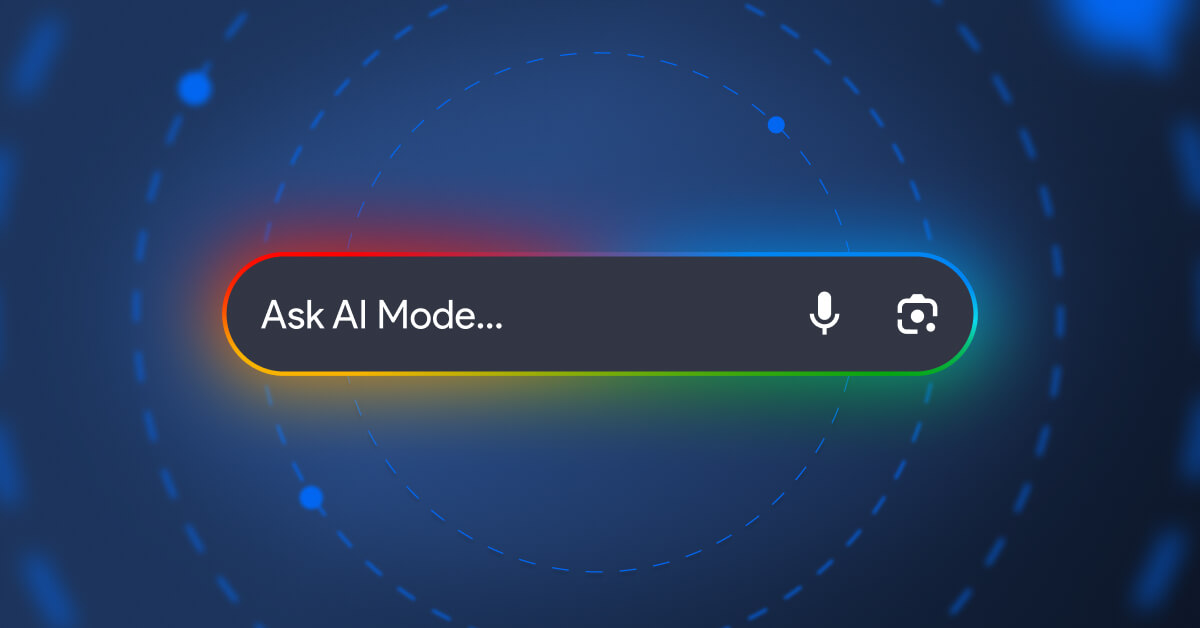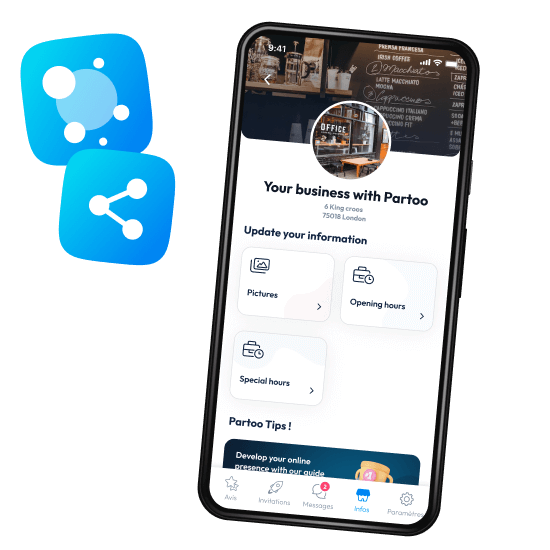
Google Pushes the Boundaries of Search with AI Mode
Announced at the Google I/O 2025 conference, AI Mode marks a new milestone in the…

Table of contents
Announced at the Google I/O 2025 conference, AI Mode marks a new milestone in the integration of generative AI at the core of Google Search.
Following the widespread rollout of AI Overviews, Google is now introducing its new AI Mode to meet the evolving expectations of users – who are increasingly accustomed to conversational responses.
Here’s everything you need to know about AI Mode!
AI Mode is a new conversational search mode in Google. It allows users to ask long, complex, and nuanced questions and receive AI-generated answers enriched with web links, charts, tables, and sometimes even images or videos.
In practical terms, it’s a new tab within Google Search, alongside Google Images, News, and Google Shopping. This mode uses Gemini 2.5 (Google’s language model) to automatically break down the query, run parallel searches on subtopics, and generate a synthesised, structured, and personalised response.
Unlike AI Overviews, which are discretely integrated at the top of the SERPs, AI Mode radically changes the user experience by offering something closer to a “personal assistant”.
Users can interact with the AI, ask for clarifications, explore different angles, or even make decisions – such as buying, booking, or comparing options.
While it is already being rolled out in the United States for all users, this new search mode is expected to gradually expand across Europe, much like AI Overviews.

You might also like:
“AI Mode is just a taste of what’s to come”, promises Elizabeth Reid, VP of Google Search.
And yet, AI Mode already appears to be reshaping the landscape when it comes to the relevance of search results.
The AI relies on an intelligent query decomposition technique: it begins analysing the user’s question, breaking it down into multiple subtopics, and then launches parallel searches across each of them.
This process allows Google to explore the web far more thoroughly than with a traditional search, delivering richer, more relevant content – sometimes even anticipating the user’s intent!
In the age of AI Mode and the rise of GEO (Generative Engine Optimisation), local businesses must optimise their online presence more than ever. It’s no longer enough to convince traditional search engines – businesses now need to stand out to generative AI systems as well!
To maximise your chances of being visible, here are three key levers to focus on – and with Partoo, activating them is simple:
With AI Mode, users are more likely to ask longer, more detailed questions – which means you’ll need to provide as much relevant information as possible to generative AIs in order to appear in their answers.
The more complete and up-to-date your Google Business Profile is (opening hours, services, descriptions, etc.), the higher your chances of being featured in an AI-generated response.
Managing your listings through Partoo’s Presence Management helps the AI better understand what your business has to offer, and boosts your local GEO performance.
Presence Management

AI Mode analyses not only text, but also images and videos.
By regularly sharing photos and Google Posts through Partoo, you increase your chances of being featured in enriched results – especially for local or visual searches.
For example, if someone searches on Google for haircut ideas, AI Mode could easily show them photos of your work – provided you’ve shared them in your Google Posts!
Google’s AI places strong emphasis on geolocation
A well-designed store locator, optimised for local GEO and connected to your business listings, can significantly improve the accuracy of your results in AI Mode – especially for queries that signal purchase intent, such as “where to buy” o “near me”.
A high-quality store locator includes structured data (schema.org), which Google uses to better interpret local content and deliver relevant, nearby results.
Want to learn more about the role of store locators in the age of GEO? Watch our dedicated webinar!
Want to easily develop your business through the Internet? It’s possible thanks to Partoo!
Learn the secrets to effective Google Business Profile optimisation.
Receive our best articles and practical guides directly in your inbox every month